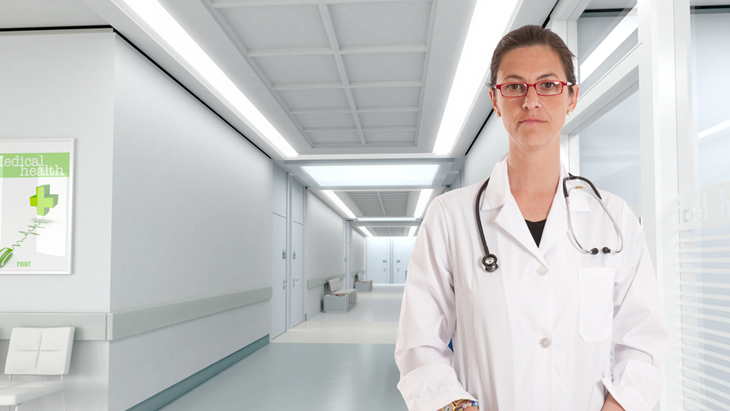What are the signs of throat cancer?
By Kathryn Senior on 22 July 2022
Your throat, also known as the pharynx, is the part of the upper respiratory tract. This opening runs down your neck behind your nose and mouth, before branching off into your windpipe and oesophagus. Cancerous growths can occur in any part of the throat and because there are so many structures that can be affected, the symptoms of throat cancer - and their effects - can be very different.
What are the types of throat cancer?
The throat consists of three parts:
Nasopharynx – this connects the back of your nose with the back of your throat.
Oropharynx – this sits below the nasopharynx directly behind the back of your mouth.
Hypopharynx – this sits below the oropharynx on either side of your larynx or voice box.
Signs of throat cancer can arise if any of these areas are affected by a cancerous growth. The resulting cancer is named according to where it is located: nasopharyngeal cancer, oropharyngeal cancer, or hypopharangeal cancer. The actual signs of throat cancer differ may be mainly in the area usually called the throat, or they may be experienced more in the nose or ears.
What are the signs?
Common early symptoms of throat cancer can include:
Coughing
Hoarseness in your voice
Pain or difficulty swallowing
A persistent sore throat
Ear pain
A lump or sore in your neck that doesn’t heal
Bleeding from your throat
More advanced tumours produce further signs of throat cancer that affect the body more generally:
Unexplained weight loss
Difficulty breathing
Sputum that contains blood
Identifying signs
The most common early signs of throat cancer include having a sore throat that never seems to go away, a bit of difficulty swallowing, some ear or neck pain and a change in your voice. Of course, all of these things can be caused by being a bit run down and having a series of colds or viral infections; they are not necessary signs of throat cancer.
As there are so many signs and symptoms of throat cancer that aren’t very specific, a throat cancer diagnosis can be quite difficult to make. The problem also works the other way round – a hoarse voice and difficulty swallowing may be mistaken for a viral infection when, in fact, it is one of the early signs of throat cancer. Some signs of throat cancer may also not appear in the early stages; if you have no symptoms, there is nothing to alert you to the potential problem. It is no surprise that many cases of throat cancer go undetected until a fairly late stage.
When should you make an appointment to see your doctor?
The most important thing to do when you think you’re showing signs of throat cancer is to pay attention to the symptoms mentioned above. It is particularly important to note how long you have been experiencing them. In general, if you have any of the symptoms for longer than two weeks, in the absence of an obvious cold or infection, you should make an appointment to see your doctor so he or she can check if you really are showing signs of throat cancer.
What signs will your doctor check for?
When you visit your doctor, he will most likely first check for other more common causes of your symptoms before deciding whether you have signs of throat cancer. Depending on the location and signs of throat cancer, your doctor may perform either a laryngoscopy or a nasal endoscopy, or both:
A laryngoscopy is used to examine your throat via your mouth to look for external signs of throat cancer. The procedure can either be indirect – your doctor examines your throat area using a small light shone into your mouth – or direct. In the latter case, a flexible or rigid fibre-optic scope is put into your mouth so that your doctor can see deeper into your throat.
A nasal endoscopy can also be used. A small, thin viewing tube is inserted into your nose. This tube has a light and camera on one end and is attached to a video monitor that allows your doctor to see the inside of your nasal and sinus cavities. This should reveal any signs of throat cancer at the back of your throat where it joins with your sinuses.
Both procedures can be used to evaluate signs and symptoms of throat cancer including lumps, infection, bleeding or other visible symptoms. If your doctor finds suspect tissue, he or she will usually perform a biopsy. A local anaesthetic will be applied and a small sample of your throat tissue will be cut out to send to a laboratory for testing. Your doctor may also arrange a CT scan or MRI scan on your neck or head to check whether or not the cancer has spread to nearby lymph nodes or to other parts of your body.
What if the signs mean a definite diagnosis?
If the signs of throat cancer that prompted you to seek medical help do lead to a diagnosis of throat cancer, the first-line treatment is usually surgery. Afterwards, you may need chemotherapy, radiotherapy or both, and perhaps even facial reconstruction surgery, if part of your jawbone has to be removed. Taking action at the first sign of symptoms of throat cancer may mean a period of difficult treatment but, ultimately this can be life-saving.
Did you enjoy this? Share:

